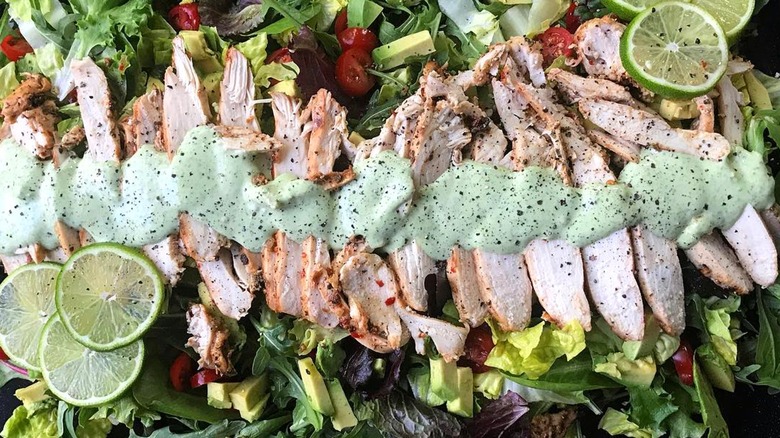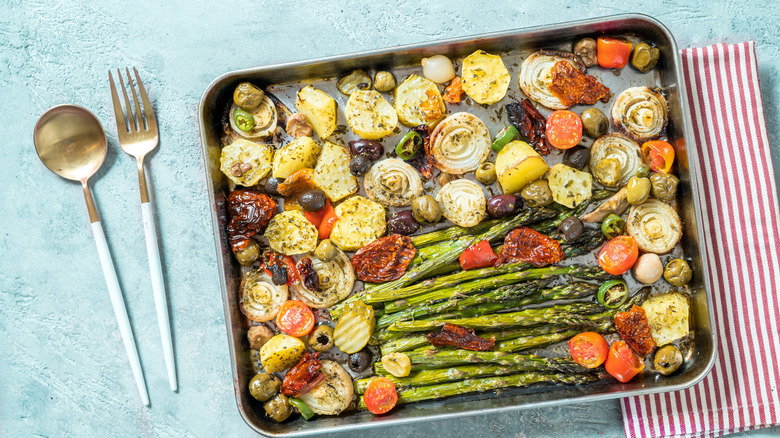The Argument For Making And Serving Salad On A Sheet Pan
Big bowls are old news when it comes to making and serving salads. While one kind of ratio mistake may be killing your homemade salad dressing, another ratio mistake may be drowning your salad in it. In our attempts to evenly dress a bowlful of greens, it's inevitable that we'll over- or under-saturate our salads, leaving some forkfuls that are totally overpowered by the dressing and others that are glaringly dry. Plus, toppings fight against being evenly tossed as gravity sends heavier croutons, nuts, apples, and anything delicious straight to the bottom of our bowls. Who among us hasn't ended up foraging through the greenery for our favorites and ignoring the "salad" portion of our salads?
Sheet pans are the answer for both preparation and presentation. By layering your ingredients across a large surface area, you can be sure you're adding the right ratio of toppings and the exact amount of dressing you desire. When serving it up for guests, give your salad ingredients a light toss directly on the sheet and a final spread to double-check that your toppings are evenly dispersed and your dressing evenly distributed. Guests can see what they're getting and no fights will break out over who can wield the salad tongs first (and scoop up all the good garnishes).
More sheet pan salad benefits
Sheet pans are the perfect tool to dress and serve any salad, but they're a one-pan marvel when it comes to toasted or roasted toppings. Some of the best salad recipes rely heavily on pre-roasting a few veggies before adding them to your serving bowl. Now you can skip that step and forget about washing the bowl.
Start by roasting your cruciferous vegetables like brussels sprouts, kale, green cabbage, cauliflower, or broccoli, and don't forget to give the entire pan a generous dose of olive oil, salt, and pepper (try dry roasting your veggies and add the oil once they're done). Other ingredients could benefit from a roast but need less time, like chickpeas, sweet potatoes, beans, delicata or butternut squash, and alliums like shallots and onions. Continue layering in the oven, finishing with components that need a light toast like pepitas or other nuts and seeds.
Once you've roasted your ingredients, pull your pan out of the oven. On a hot day, let your sheet pan salad cool to room temperature then chill the pan and salad before dressing. Finally, add spring and summery herbs like basil or dill and other fresh ingredients like tomatoes or stone fruits. In the fall and winter, a warm, baked salad is a versatile staple so feel free to add your final toppings right away. Goat and feta cheese are even better when they trap residual warmth from the pan. No matter the season, sheet pan salads have a definitive place in your cooking repertoire.

